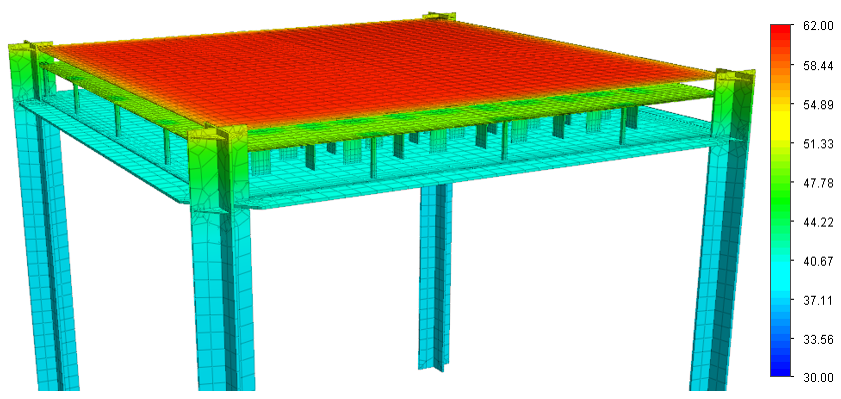Our previous post noted that for SKA2, large, electronically steerable phased arrays or “aperture arrays” are being developed for the mid-frequency band (450 – 1450 MHz). The Mid-Frequency Aperture Array (MFAA) Consortium in collaboration with Stellenbosch University, as a member of the MFAA, is tasked with developing these large systems. The MFAA forms part of the SKA Advanced Instrumentation Programme (AIP) responsible for developing the technology required to realise the aperture array concept in the mid-frequency range.
Furthermore, with recent advancements in low-power electronics and computing aperture arrays have become a workable option for certain frequency bands. For SKA2, the MFAA consortium is currently evaluating, amongst others, the Dense Dipole Array (DDA) developed at Stellenbosch University’s Electrical and Electronic Department, as a candidate for the MFAA.
The DDA is a ground planar structure with tightly coupled dipole elements which is fed differentially through an expressly designed common-mode suppressing feed. The planar nature of the DDA structure will assist in simplifying mass-production and maintenance as many are to be deployed in the field.
- The mid-frequency aperture array
The highly anticipated MFAA will be deployed in the Karoo as the latter region offers sufficient spacing combined with the ideal radio quiet backdrop. Notwithstanding these benefits, the arrays will still be exposed to harsh climates. Since the receiver noise in this frequency band dominates the system noise temperature, the environmental temperate can significantly influence the quality of received signals. This creates “a challenge as the arrays will have to operate at ambient temperature as forced cooling cannot be implemented within reasonable cost and complexity, due to the large number of antennas.”
- Thermal analysis
Considering the climate of the Karoo, a thermal analysis of the DDA was, therefore, crucial to ensure its capability of meeting the required performance standards under these conditions. Two different simulations were, however, necessary to conduct a conclusive thermal analysis of the DDA. The first simulates worst-case hot day and worst-case cold day temperatures representing the “highest and lowest ambient temperature and solar flux respectively that the DDA might experience during operation.” The second is a multi-physics simulation to develop a relationship between the temperatures of the DDA and its electromagnetic performance. This analysis was done by “developing and testing a finite element model that incorporates computational fluid dynamics to simulate the resulting temperatures of the DDA when in the extreme conditions of the Karoo.”
The key component restricting the operating temperature of the DDA and an essential consideration during the analysis is the integrated low-noise amplifier (LNA). Two operating parameters of the LNA namely, the maximum temperature and change in temperature were evaluated to ensure the desired performance of the DDA is achieved that will meet the requirements of the MFAA.
- Conclusion
The thermal solution is essential to bring the DDA within acceptable operating conditions. To facilitate this, an open enclosure was designed and optimised utilising a “polypropylene cover to mitigate the effects of the environment while considering the impact on the electromagnetic performance”. Further simulations are subsequently performed to measure antenna performance degradation. It was found that the enclosure effectively decreased the operating parameters to an acceptable level. It only had a minor impact on the electromagnetic performance although with anticipated benefits in stabilisation with further optimisation.
If you enjoyed this post, this might also be of interest:
Beyond SKA1: The Dense Dipole Array
Square Kilometre Array (SKA) – the world’s largest radio telescope will explore the universe





